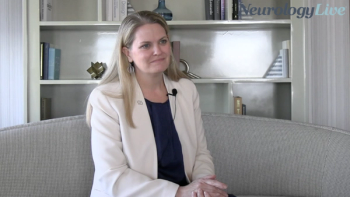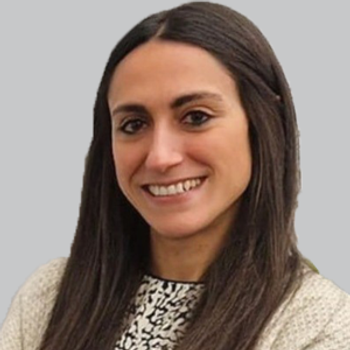
DMT Escalation Method Inferior to Immediate Initiation on MS Outcomes
The Swedish treatment strategy—one of mostly induction—was associated with a 24% reduction in the rate of reaching EDSS score of 3 and a 25% reduction in the rate of reaching an EDSS score of 4.
A recently conducted study comparing treatment strategies in patients with relapsing-remitting multiple sclerosis (RRMS) revealed that induction of high efficacy disease-modifying therapies (DMTs) was superior to conventional first-line DMT escalation with regards to disability outcomes.
Lead author Tim Spelman, MD, PhD, Department of Clinical Neuroscience, Karolinska Institute, and colleagues collected data on 2700 patients from the Swedish MS registry and 2161 patients from the Danish MS registry to help understand the vast national differences in treatment strategies and disability outcomes. The primary analysis compared time to 24-week confirmed disability worsening (CDW), which was defined as an increase in Expanded disability Status Scale (EDSS) score with at least 1 point from baseline sustained between 2 follow-up visits separated by no less than 6 months.
Patients who started a DMT between 2013 and 2016 were included in the analysis and were observed for a mean of 4.1 years (standard deviation [SD], 1.5). The Swedish treatment strategy, which featured a higher rate (34.5% [n = 931]) of patients who initiated a highly effective DMT, was associated with a 29% reduction in the rate of postbaseline 24-week CDW relative to the Danish treatment strategy (HR, 0.71 [95% CI, 0.57-0.90]; P = .004), which featured a lower rate of high-efficacy DMT initiation (7.6% [n = 165]).
This study was the first of the authors’ knowledge to observed differences in national treatment recommendations. They wrote, "starting with a more effective therapy and switching to a more effective DMT at treatment discontinuation irrespective of reason seemed to be superior to commencing a conventional first-line DMT and escalation."
READ MORE:
Although the earlier 2013-2014 subgroup did not demonstrate a significant difference in the rate of CDW (HR, 0.80 [95% CI, 0.70-1.02]; P = .08), the later 2015-2016 cohort demonstrated a significant reduction in CDW favoring the Swedish patients (HR, 0.78 [95% CI, 0.64-0.95]; P = .006).
There have been several documented differences in the treatment strategies based on country. In Sweden, teriflunomide (Aubagio; Sanofi) treatment was initially approved for only patients with RRMS whose treatment with interferon beta failed. Another major difference is the increasing use of rituximab (Rituxan; Biogen) as an off-label treatment for MS in Sweden. Investigators noted that this drug has become the most frequently used DMT, initially as second- or third-line treatment, but during recent years, it has been used increasingly as a first-line option.
Teriflunomide was the most frequent first-line treatment for Danish patients (42%; n = 907), followed by interferon beta-1a (29.8%; n = 643). Initiation of low or moderately effective DMT as the first treatment occurred in 92.4% (n = 1966) of Danish patients and 65.5% (n = 1769) of Swedish patients.
In addition to reductions in 24-week CDW, investigators documented a 24% associated reduction in the rate of reaching an EDSS score of 3 among those in the Swedish treatment strategy group, relative to those in the Danish treatment strategy group (HR, 0.76 [95% CI, 0.60-0.97]; P = .03). Notably, this reduction was only observed in the later treatment group (HR, 0.73 [95% CI, 0.62-0.92]; P = .001), but not in the earlier treatment cohort (HR, 0.87 [95% CI, 0.68-1.13]; P = .25).
When reviewing only patients who reached an EDSS score of 3 at any time during follow-up, the mean time to reach such score was 2.2 (SD, 1.5) years compared to 1.7 years (SD, 1.2) in the Danish cohort. Similarly, the Swedish treatment strategy was associated with a 25% decrease in the rate of reaching an EDSS score of 4 relative to the Danish treatment strategy (HR, 0.75 [95% CI, 0.61-0.96]; P = .01). Furthermore, those in the Swedish cohort had a mean time of 3.9 years (SD, 1.4) to reach an EDSS score of 4 compared with 2.6 years (SD, 1.6) in the Danish cohort.
Significantly higher proportions of both index DMT discontinuation and subsequent switching to alternate DMT were observed in the Danish treatment strategy. Conversely, the Swedish treatment strategy was associated with a 22% reduction in the rate of discontinuation (HR, 0.78 [95% CI, 0.71-0.68]; P <.001) and a 12% reduction in treatment switching (HR, 0.88 [95% CI, 0.78-0.98]; P = .02) relative to the Danish treatment strategy.
Induction vs escalation treatment strategies have been an age-old conversation within the MS space and is still contemplated by clinicians today. We recently sat down with Barry Hendin, MD, neurologist, Banner Health, and chief medical officer, MS Association of America, who provided his thoughts on the ongoing debate. Watch his commentary below.
REFERENCE
Spelman T, Magyari M, Piehl F, et al. Treatment escalation vs immediate initiation of highly effective treatment for patients with relapsing-remitting multiple sclerosis. JAMA Neurol. Published online August 16, 2021. doi: 10.1001/jamaneurol.2021.2738
Newsletter
Keep your finger on the pulse of neurology—subscribe to NeurologyLive for expert interviews, new data, and breakthrough treatment updates.


































